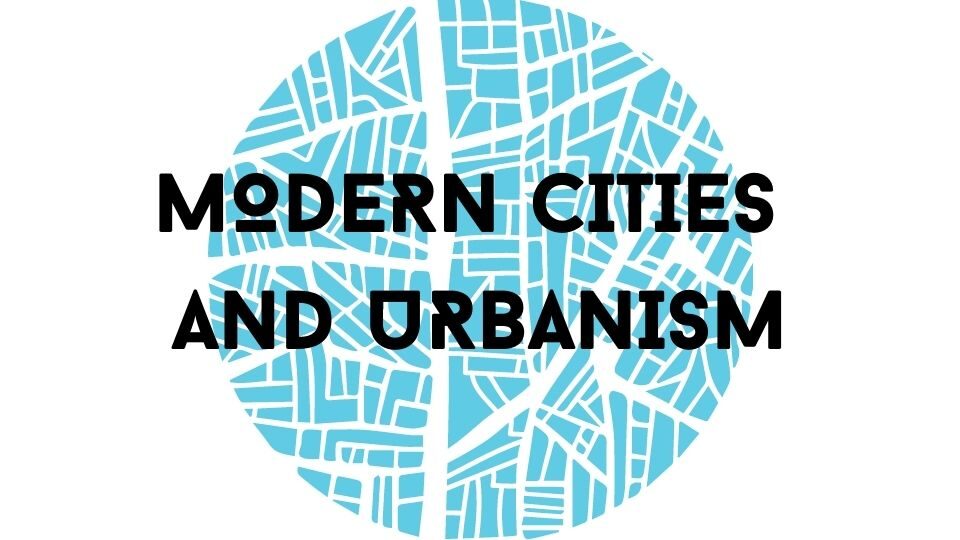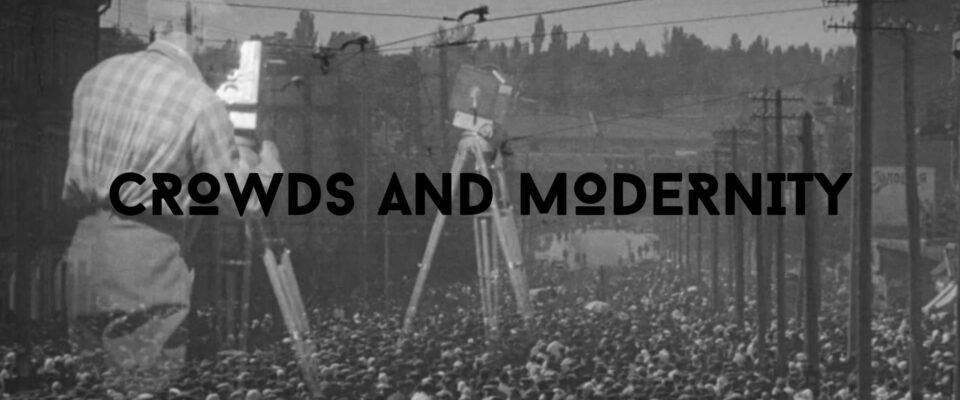Questions
How did Fyodor Dostoevsky and Andrei Bely depict crowds and street life in St. Petersburg? How did they describe the psychological impacts triggered by modernity/modern metropolis?
Dostoevsky, Bely, and St. Petersburg
St. Petersburg is a literary city. Many influential Russian writers either came from, lived, or spent time in Petersburg, and some of them further depicted the city and its people in their novels. Fyodor Dostoevsky was one of them, so was Andrei Bely. This report focuses on two pieces of literature, Dostoevsky’s Crime and Punishment (1866) and Bely’s Petersburg (1913), to see how they each highlight street life and crowds in St. Petersburg, and the psychological impacts triggered by modernity. Instead of analyzing the novels myself, I study how different scholars interpret and associate them with the topic for this week. Their interpretations, however, will not lead to a beautiful, splendid Petersburg.
Before discussing the novels, it is important to talk about the Petersburg text in Russian literature. The Petersburg texts “are defined by walking, running, and riding along Petersburg streets as the characters map different locales of the city.” (Matich 2010, 10) A few significant nineteenth century Russian poems and prose fictions are known as the Petersburg texts, including Dostoevsky’s Crime and Punishment. On the other hand, Bely’s Petersburg is a modernist version of the Petersburg text (Matich 10-11). Therefore, both novels document Petersburg streets, and their characters are like tour guides for the reader, presenting the city as they wander.
Let us first begin with Dostoevsky and his novel. Undoubtedly one of the most well-known and successful Russian writers in history, Dostoevsky was born in Moscow in 1821 and moved to Petersburg at the age of sixteen for education (Peace 2006, 3). In the 1840s and the 1860s, he lived in Petersburg’s Haymarket area and discovered that unplanned urban growth had caused strains and dislocation in the city (Lindenmeyr 2006, 37). Moreover, the city that Dostoevsky encountered was filled with crime. Robert J. Abbott, whose article focuses on crime in Petersburg from 1866 to 1878, states that crimes had received more attention in novels and press than any other threats prior to the 1879-1881 terrorist crisis, and the city described in Crime and Punishment, published in 1866, was “consumed by fear of criminals.” (Abbott 1977, 70-71) Moreover, the story in the novel was based on an actual murder that could be found in newspapers those days (Blair 2006, 45). Let us explore how different scholars interpret the main character, Raskolnikov’s relationship with the city, crowds, streets, and modernity.
In the book, Raskolnikov murders a moneylender named Alëna and her half-sister Liza (Peace 8-9). Elaine Blair suggests that the city Petersburg is a potential factor that drives Raskolnikov to kill (Blair 46). Adele Lindenmeyr also argues that there are two forms of the city that create a psychological impact on Raskolnikov: the squalid one in reality and the ideal one in his mind. Either city supports his motive for the murder (Lindenmeyr 37). Both sources explain the psychological connections between the murder and the city. Furthermore, Peter Lowe highlights another layer of psychological influence depicted in the novel. Lowe argues that through his writing, Dostoevsky suggests that a modern metropolis like St. Petersburg is unable to create a lasting community though it brings more people to the same place than ever before; the crowded city only triggers a sense of isolation and alienation (Lowe 2005, 4-5). In the novel, Raskolnikov wanders through the crowded streets yet feels nothing like a society; he also talks to himself because he finds no one else to talk to (Lowe 4-5). The contrast between the lively appearance of the modern street life and the isolated inner feeling of Raskolnikov is established in Crime and Punishment. Just as Blair suggests in her book, “[s]uperficially disguised as a detective story, the novel was a psychologically complex and ambiguous portrait of a murderer wholly new in fiction.” (Blair 45-46) Blair, Lindenmeyr, and Lowe all point out that the city has fundamentally influenced Raskolnikov from a psychological perspective, and the influences, however, are negative.
Unlike Dostoevsky, Andrei Bely never lived in Petersburg, yet he had deep connections with the city: he participated in literary circles in Petersburg and Moscow, and he was in the city during the 1905 and 1917 revolutions (Blair 71-72). It is reasonable to speculate that the revolutions had shaped the city inside Bely’s mind, because his Petersburg is full of revolutionary sentiments. He wrote Petersburg between 1911 and 1913 (Wermuth-Atkinson 2012, 1), and the story takes place in October 1905, a special month when strikes and protests in the city forced Nicholas II to promulgate a constitution (Blair 71). The two major characters in the book are a conservative government official named Apollon Apollonovich Ableukhov and his son Nikolai Apollonovich, who is recruited by terrorists to blow up his own father (Blair 73). Petersburg as a modernist version of the Petersburg text sheds light on the urban landscape. According to Blair, pressed by fear, the characters wander around the streets slowly, and almost every page of the novel covers a street or monument in the city (Blair 73-74). In addition, different scholars have connected this book with the concept of modern metropolis.
Blair states that Petersburg is more about terror than about the 1905 revolution or St. Petersburg itself (Blair 72), suggesting a psychological concentration. In the section called “Petersburg. Ringstraße and the psychology of modern man. The City as a mother-imago,” Judith Wermuth-Atkinson provides a similar yet slightly different perspective. She argues that in the novel, the image of the city is emblematic, representing the psychology of modern man (Wermuth-Atkinson 149). In other words, Wermuth-Atkinson highlights that in Petersburg, city and psychological effects are inseparable. Compared to Blair and Wermuth-Atkinson, Matich delves deeper into the relationship between the characters and modern metropolis. She makes a reference to Georg Simmel’s “The Metropolis and Mental Life” and argues that Simmel’s terms are similar to Bely’s terms in the novel, “in which motion characterizes narrative and the distinction of outer/inner is demonstrably blurred, as are the consequences: the peripeties of the characters’ shattered nerves and inability to distinguish between fantasy and reality.” (Matich 5) She further argues that working classes and revolutionaries in Petersburg intensify “the experience of modernity as urban sensory shock.” (Matich 5) Matich’s argument stresses two psychological influences that have not been brought up previously: the incapability to see the difference between reality and fantasy, and urban sensory shock. Compared to Raskolnikov’s isolation and alienation, the mental activities of the characters in Petersburg are even more bewildered, matching the social conditions at the time. Through scholars like Wermuth-Atkinson and Matich, we again see the psychological impacts that a modern city like St. Petersburg can have on its people. Nonetheless, these impacts are again negative.
In conclusion, Dostoevsky’s Crime and Punishment and Bely’s Petersburg narrate two completely different stories, yet as mentioned before, scholarly analyses show that they both highlight the negative psychological influences that a modern metropolis has brought to its residents; characters in these two novels have all turned morbid. Another similarity is that both Dostoevsky and Bely depict St. Petersburg as a chaotic city in their literature. Dostoevsky was inspired by crimes, and Bely was influenced by revolutions. In the case of imperial St. Petersburg, modernity and modernization were accompanied by violence, fear, illusion and isolation.
Bibliography
Abbott, Robert J.. “Crime, Police, and Society in St. Petersburg, Russia, 1866-1878.” The Historian 40, no.1 (November 1977): 70-84. https://www.jstor.org/stable/24444726.
Blair, Elaine. Literary St. Petersburg: A Guide to the City and Its Writers. New York: The Little Bookroom, 2006.
Lindenmeyr, Adele. “Raskolnikov’s City and the Napoleonic Plan.” In Fyodor Dostoevsky’s Crime and Punishment: A Casebook, edited by Richard Peace, 37-49. Oxford; New York: Oxford University Press, 2006.
- Note: Peace’s introduction is also referenced majorly for background information
Lowe, Peter. “Prufrock in St. Petersburg: The Presence of Dostoyevsky’s Crime and Punishment in T.S. Eliot’s ‘The Love Song of J. Alfred Prufrock.’” Journal of Modern Literature 28, no.3 (Spring 2005): 1-24. https://www.jstor.org/stable/25167524.
Matich, Olga. “Introduction.” In Petersburg/Petersburg: Novel and City, 1900-1921, edited by Olga Matich, 3-28. Madison: The University of Wisconsin Press, 2010. ProQuest Ebook Central.
Wermuth-Atkinson, Judith. The Red Jester: Andrei Bely’s Petersburg as a Novel of the European Modern. Berlin: LIT, 2012.

